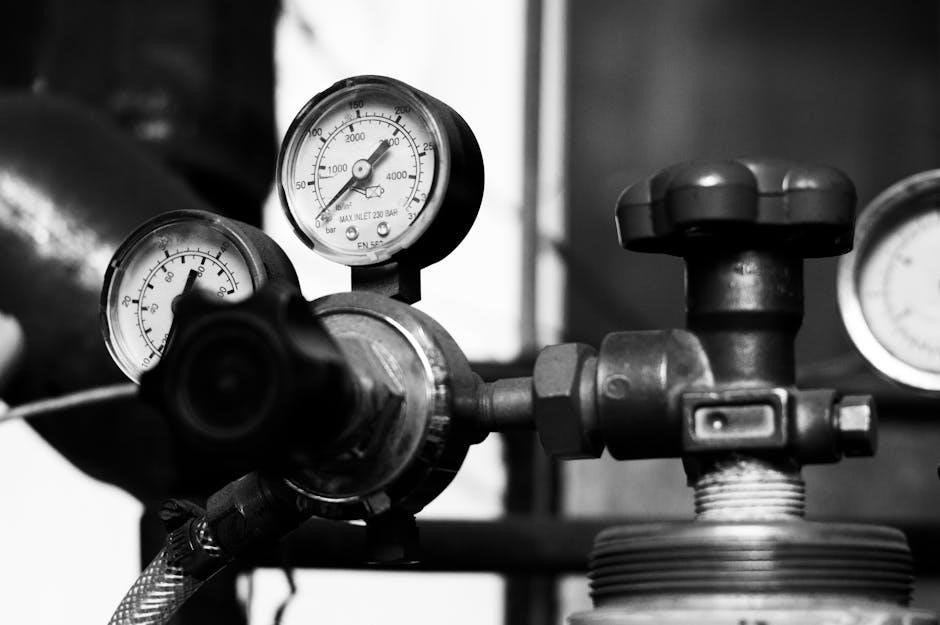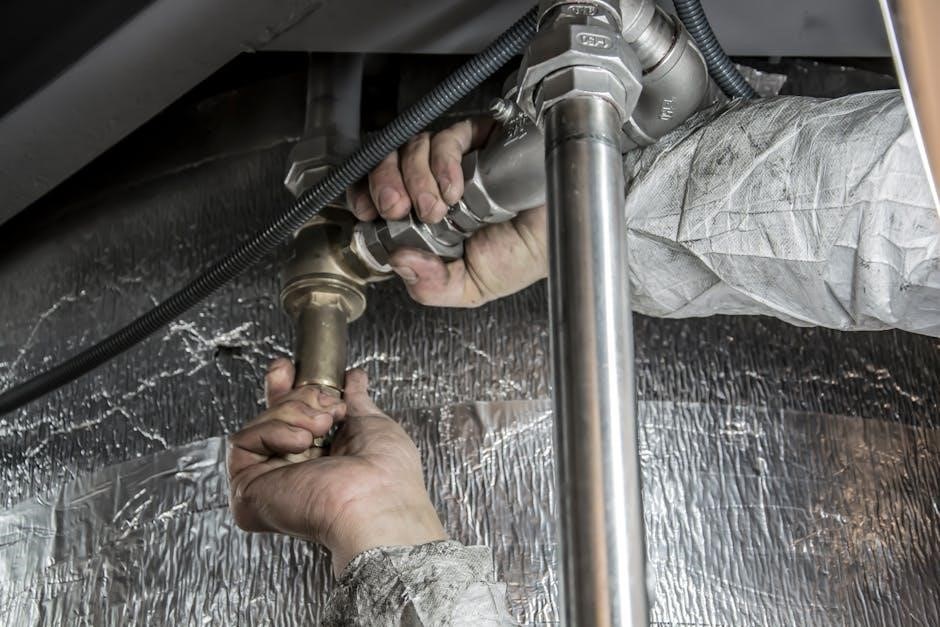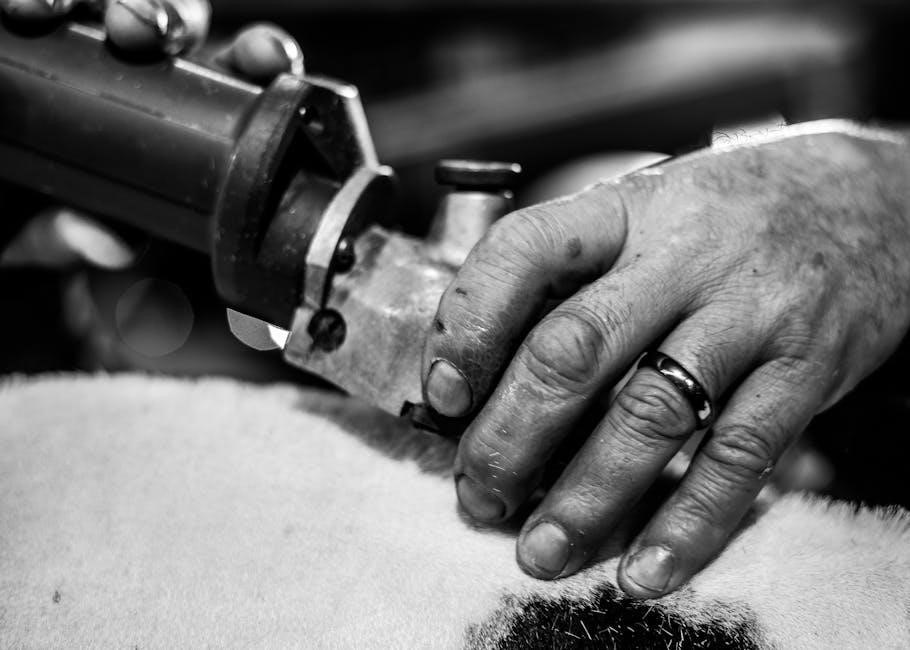The Evinrude tilt trim manual release valve is a critical component designed to enable manual adjustment of the outboard motor’s position when the power trim system fails. It ensures reliability and safety by allowing operators to raise or lower the motor manually, maintaining control in emergencies. Constructed from durable materials like 316 stainless steel and equipped with Viton seals, this valve guarantees smooth operation and corrosion resistance, making it an essential part of marine propulsion systems.

Construction of the Evinrude Tilt Trim Manual Release Valve
The valve is built with high-quality materials, including 316 stainless steel for durability and corrosion resistance. It features Viton seals to prevent leaks and ensure smooth operation. The robust design withstands marine environments, providing reliable performance for manual tilting and trimming functions.
2.1. Materials Used
The Evinrude tilt trim manual release valve is constructed from premium materials to ensure durability and reliability in marine environments. The primary component is made from 316 stainless steel, known for its excellent corrosion resistance and strength. This material is ideal for withstanding the harsh conditions of saltwater and constant exposure to moisture. Additionally, the valve incorporates Viton seals, which are renowned for their superior sealing properties and resistance to chemicals and extreme temperatures. These seals prevent fluid leaks and ensure smooth operation during manual adjustments. The retaining ring and housing are also crafted from durable materials to maintain structural integrity and withstand operational pressures. The combination of these high-quality materials ensures the valve’s longevity and reliable performance, making it a dependable solution for manual motor positioning in the tilt and trim system.
2.2. Design Features
The Evinrude tilt trim manual release valve is engineered with precision to deliver reliable performance and ease of use. Its compact design ensures easy access, typically located on the transom bracket for quick operation. The valve features a straightforward mechanism that allows manual adjustment of the motor’s position by turning it counterclockwise, usually requiring about 3.5 turns to engage the retaining ring. This design prevents over-opening and ensures controlled operation. The valve is integrated with the tilt and trim system, enabling fluid to flow from the tilt cylinder when activated, which facilitates manual raising or lowering of the outboard motor. Safety features include a torque specification of 45 to 55 in-lbs (5 to 6 Nm) for secure installation, ensuring the valve remains tightly sealed during normal operation. The design also incorporates a retaining ring to maintain the valve’s position, preventing accidental dislodgement. These features collectively enhance the valve’s functionality, reliability, and user-friendliness, making it a vital component for marine enthusiasts and professionals alike.

Functionality of the Manual Release Valve
The Evinrude tilt trim manual release valve enables precise manual control of the outboard motor’s position. By opening the valve, fluid flows from the tilt cylinder, allowing the motor to be raised or lowered manually, ensuring reliable operation when the power trim system fails.
3.1. Operational Overview
The Evinrude tilt trim manual release valve operates by allowing fluid to flow from the tilt cylinder, enabling manual adjustment of the outboard motor’s position. To engage the valve, it is turned counterclockwise with a screwdriver, typically requiring 3 to 4 turns until it contacts the retaining ring. This action releases the hydraulic pressure, permitting the motor to be raised or lowered manually. The valve must be closed firmly after use to restore normal power trim and tilt functionality. Proper operation ensures smooth transitions between motor positions, even when the power system fails. Always follow the manufacturer’s guidelines for safe and effective use of this feature.
- Open the valve counterclockwise for manual adjustment.
- Close the valve securely to reactivate the power trim system.
- Ensure the valve is properly torqued after use for reliability.

This mechanism provides a reliable backup solution for motor positioning, enhancing overall system dependability in marine applications.
3.2. Role in the Tilt and Trim System

The Evinrude tilt trim manual release valve plays a pivotal role in the tilt and trim system by serving as a fail-safe mechanism. It allows operators to manually control the motor’s position when the hydraulic system fails, ensuring continued functionality. The valve regulates fluid flow between the tilt cylinder and the manual release mechanism, enabling the motor to be raised or lowered without electrical or hydraulic assistance. This feature is crucial for maintaining boat stability and performance in adverse conditions. By providing a reliable manual override, the valve enhances the overall safety and efficiency of the tilt and trim system.
- Acts as a fail-safe during system failure.
- Enables manual motor positioning for stability.
- Ensures continuous operation in emergencies.
This valve is essential for maintaining control of the outboard motor, ensuring safe and efficient operation in all conditions.

Importance of the Manual Release Valve

The manual release valve is essential for ensuring the tilt and trim system’s reliability, providing a failsafe solution during power trim failures. It allows manual motor positioning, maintaining operational control and preventing potential hazards. Constructed from durable materials, it ensures long-term functionality and safety, making it a critical component for marine enthusiasts.
4.1. Necessity for Manual Motor Positioning
The Evinrude tilt trim manual release valve is indispensable for manual motor positioning, ensuring boaters can adjust the outboard motor’s angle even when the power trim system malfunctions. This capability is crucial for maintaining control and stability, especially in challenging marine conditions. By enabling manual operation, the valve prevents situations where the motor might remain stuck in an unfavorable position, which could hinder performance or safety. Operators can raise or lower the motor to optimize propulsion efficiency or navigate through shallow waters safely. The valve’s design allows for precise adjustments, ensuring the motor aligns correctly with the water surface for effective thrust. This feature is particularly vital during emergencies or in remote areas where professional assistance may be unavailable. Thus, the manual release valve serves as a reliable backup system, enhancing the overall reliability of the tilt and trim mechanism and providing peace of mind for boaters.
4.2. Ensuring System Reliability
The Evinrude tilt trim manual release valve plays a pivotal role in ensuring the reliability of the entire tilt and trim system. By providing a failsafe mechanism, it prevents system failure during critical moments, such as when the power trim system malfunctions. Constructed from high-quality materials like 316 stainless steel, the valve is designed to withstand harsh marine environments, resisting corrosion and wear. Its Viton seals further enhance reliability by preventing leaks, ensuring smooth operation even under pressure. Regular inspection and maintenance of the valve, including replacing worn O-rings and tightening it to the specified torque, are essential for maintaining system integrity. This valve also acts as a backup solution, allowing operators to manually adjust the motor’s position in emergencies, thereby preventing prolonged downtime. Its durability and consistent performance make it a vital component for ensuring the overall reliability of the tilt and trim system, providing peace of mind for boaters in all conditions.

Manual Operation of the Tilt Trim System
Manual operation involves opening the release valve counterclockwise with a screwdriver, typically 3-4 turns, until it contacts the retaining ring. This allows fluid to flow, enabling manual positioning of the outboard motor. Ensure the valve is closed afterward for proper system function.
5.1. Preparation Steps
Before manually operating the tilt trim system, several preparation steps must be followed to ensure safety and proper functionality. First, consult the Evinrude manual to understand the specific procedures for your model. Locate the manual release valve, typically found on the transom bracket, and gather the necessary tools, such as a screwdriver. Ensure the boat is on a trailer or lift to prevent accidental movement. Turn off the engine and engage the tilt support lever to stabilize the outboard motor. Wear protective gear, including gloves and safety glasses, to guard against potential hazards. Check the area around the valve for any obstructions or debris. Slowly relieve pressure in the system by carefully turning the valve counterclockwise, but do not fully open it yet. Finally, ensure the outboard is in a raised position to minimize fluid leakage during manual operation. These steps are crucial for safe and effective manual adjustment of the tilt trim system.
5.2. Step-by-Step Guide
Manually operating the Evinrude tilt trim system involves a series of precise steps to ensure safe and effective adjustment. Start by opening the manual release valve located on the transom bracket. Use a screwdriver to turn the valve counterclockwise for approximately 3.5 turns until it contacts the retaining ring. This releases pressure in the tilt cylinder, allowing manual adjustment. Next, raise or lower the outboard motor to the desired position using the tilt support lever or by hand, ensuring it moves smoothly. Once the motor is in the correct position, close the manual release valve firmly by turning it clockwise to restore system pressure. Engage the tilt lock mechanism to secure the motor in place. Finally, double-check the valve to ensure it is tightly closed and test the motor’s position to confirm proper alignment. This process ensures the outboard motor functions correctly even when the power trim system is inoperable.

Maintenance and Inspection
Regular inspection of the manual release valve ensures optimal performance. Inspect O-rings for wear and replace them as needed. Lubricate the valve and O-rings with Evinrude Biodegradable TNT Fluid. Tighten the valve to 45-55 in. lbs. (5-6 Nm) torque after installation to maintain system integrity and functionality.
6.1. Inspection and Replacement
Inspecting and replacing the manual release valve is crucial for maintaining the tilt and trim system’s reliability. Begin by removing the valve slowly to avoid pressure-related issues, wearing safety glasses for protection. Examine the O-rings for signs of wear or damage and discard them if necessary. Clean the valve housing thoroughly, ensuring no debris remains. Lubricate new O-rings with Evinrude Biodegradable TNT Fluid before installing them on the valve. When reinstalling, tighten the valve to the specified torque of 45 to 55 in. lbs. (5 to 6 Nm) to ensure a secure seal. Replacing worn or damaged components promptly prevents leaks and maintains smooth manual operation. Always refer to the manufacturer’s guidelines for proper procedures and torque specifications to ensure system integrity and functionality. Regular maintenance helps extend the lifespan of the valve and ensures reliable performance in marine conditions.
6.2. Torque Specifications
Proper torque specifications are essential for ensuring the Evinrude tilt trim manual release valve operates effectively and securely. The valve must be tightened to a torque range of 45 to 55 in. lbs. (5 to 6 Nm) to ensure a leak-free seal and proper functionality. Using a torque wrench is highly recommended to achieve this precise specification. Over-tightening beyond the recommended range can damage the valve or its threads, while under-tightening may result in leaks or reduced performance. Always apply a small amount of Evinrude Biodegradable TNT Fluid to the O-rings before installation to ensure smooth operation and a tight seal. When reinstalling the valve, tighten it in small increments, checking the torque periodically to avoid exceeding the maximum limit. Refer to the service manual for detailed instructions and diagrams to guide the process. Adhering to these torque specifications ensures the longevity and reliability of the manual release valve, maintaining the overall performance of the tilt and trim system. Proper torque application is a critical step in maintaining the integrity of the system and preventing potential failures during operation.

Troubleshooting Common Issues
Common issues with the Evinrude tilt trim manual release valve include leaks, corrosion, and valve sticking. Inspect for worn O-rings or damaged seals and replace as needed. Apply a penetrating lubricant like Zep 45 to free stuck components. Regular maintenance ensures reliable operation and prevents unexpected failures during use.
7.1. Identifying Common Problems
Common issues with the Evinrude tilt trim manual release valve often stem from wear and tear or environmental factors. Leaks are a frequent problem, typically caused by worn-out O-rings or damaged seals. Corrosion can also occur due to exposure to saltwater, impairing the valve’s functionality. Additionally, the valve may become stuck or difficult to turn, often due to debris or mineral buildup. Hydraulic fluid leakage from the tilt cylinder is another indicator of a malfunctioning valve. Operators may notice difficulty in manually raising or lowering the outboard motor, which can signal a faulty manual release valve. Regular inspection is crucial to identify these issues early, as neglecting them can lead to more severe system failures. Understanding these common problems helps in maintaining the reliability and performance of the tilt and trim system, ensuring safe and efficient boat operation.
7.2. Solutions and Repair Tips
To address issues with the Evinrude tilt trim manual release valve, start by inspecting and replacing worn or damaged O-rings and seals. Apply a marine-grade lubricant to prevent corrosion and ensure smooth operation. If the valve is stuck, use a penetrant like Zep 45 to loosen it. Always tighten the valve to the specified torque of 45 to 55 in. lbs. (5 to 6 Nm) to avoid damage. For hydraulic fluid leaks, check the valve’s retaining ring and ensure it is securely installed. When refilling the tilt and trim system, use Evinrude/Johnson Biodegradable TNT Fluid to maintain optimal performance. Regularly cleaning the valve and surrounding areas from debris and mineral buildup can prevent malfunctions. If manual operation becomes difficult, ensure the valve is fully closed before using the power trim system. Replacing the manual release valve entirely may be necessary if internal components are severely damaged. Following these steps ensures the tilt and trim system functions reliably, minimizing downtime and maintaining boat performance.
The Evinrude tilt trim manual release valve is a vital component that ensures the reliability and safety of outboard motor operations. Designed with precision and constructed from high-quality materials, it provides a durable solution for manual motor positioning, especially in emergencies. Its ability to allow manual adjustment when the power trim system fails makes it an indispensable feature for boaters. Regular maintenance, such as inspecting and replacing O-rings and ensuring proper torque specifications, is essential to maintain its functionality. By following the guidelines and repair tips outlined, operators can extend the lifespan of the valve and ensure smooth operation. The Evinrude tilt trim manual release valve exemplifies innovation in marine engineering, offering a practical and reliable solution for controlling the outboard motor’s position. Its importance cannot be overstated, as it directly impacts the safety and performance of the vessel. Proper care and understanding of this component are key to maximizing its benefits and ensuring uninterrupted boating experiences.